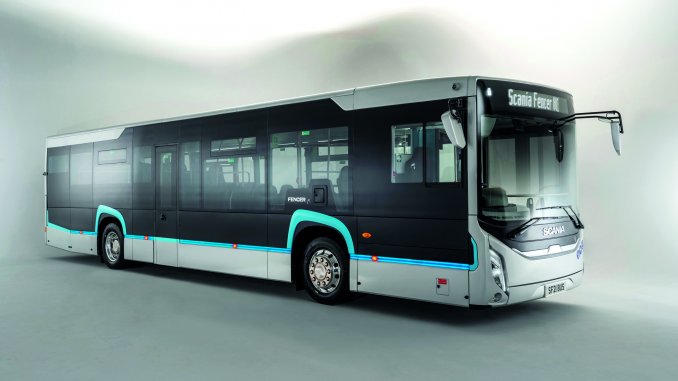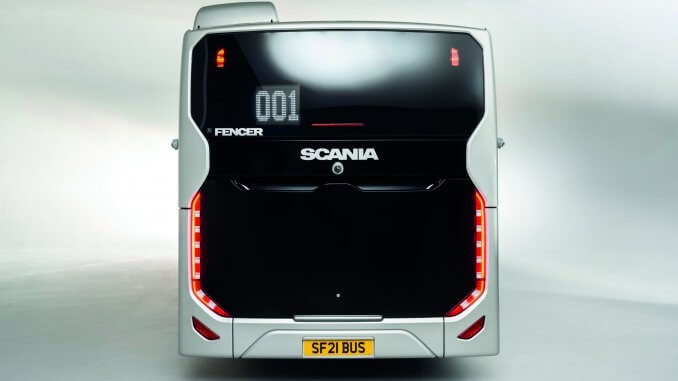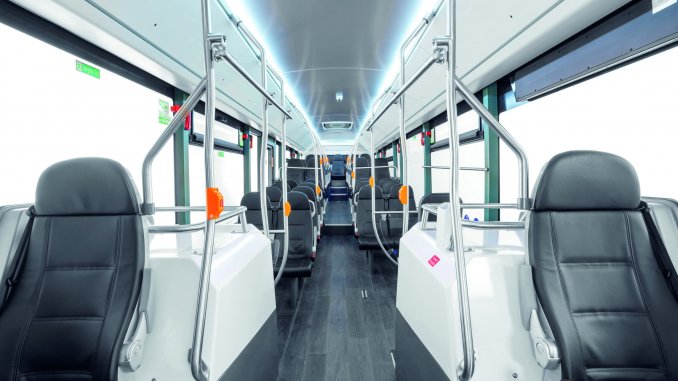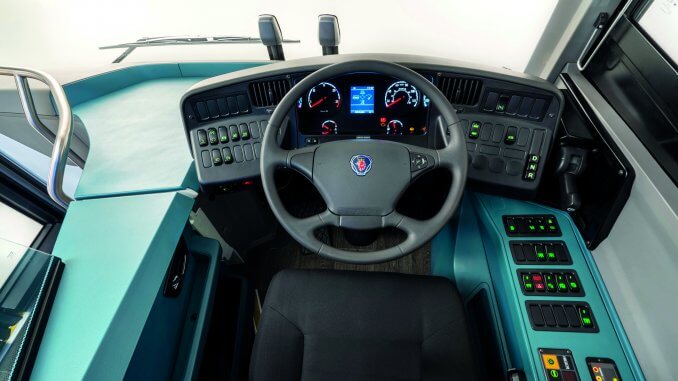The first new complete Scania single-decker bus offering in a decade has been unveiled in the UK ahead of a worldwide roll-out
The UK is the first country to see the launch of the first model of Scania’s new Fencer bus range, the Fencer f1, a single deck, ‘fully built-up’ bus. The first complete Scania single deck bus to be released in the UK for ten years, the bus will be rolled out across other markets worldwide, and Scania says it will form the basis of a new platform of sustainable buses from the marque.
Named to reflect its agility, performance and the sharpness of its design lines, Scania says its Fencer f1 offers a host of operational and sustainability benefits, including the widest range of fuelling options available on the market.
“The Scania Fencer f1 is a truly innovative and exciting new product which is the result of several years of research and development by Scania’s engineers in conjunction with our colleagues at Higer, with whom we have enjoyed a strong, professional partnership with for the past 15 years,” said Martin West, Sales Director, Bus and Coach for Scania (Great Britain) Limited.
“The result is a flexible, efficient and economical vehicle built to the high quality standards assured by our fully embedded production processes at the Higer factory. As such, the Fencer will contribute significantly to the sustainability objectives of the UK Government’s recently announced national bus strategy. As a completely built-up Scania product, the Fencer will be fully supported by the Scania network of 84 UK service centres.
“The Fencer will be built on a new chassis, which has been designed from the outset as a future-proofed platform with a comprehensive selection of renewably-fuelled drivetrains including full battery electric and hybrid versions and biogas options. Initially, we are launching the vehicle with our tried, tested, proven and highly regarded nine-litre engine, which can be operated on 100% HVO (Hydrotreated Vegetable Oil) biofuel. This engine option has been missed in recent years by our rural and inter-urban customers and we are delighted to be reintroducing it to the market at this time.
“Looking ahead, the single deck Fencer f1 is just the beginning of a new bus platform for Scania. Articulated and double deck options are also planned, meaning we will soon have a solution for every UK bus fleet operator.”
Technical specification
The nine-litre Scania engine fitted to the first Fencer vehicles will be SCR-only and meet Euro VI Step E emissions standards. Paired with ZF’s Ecolife 2 fully automatic six-speed gearbox, Scania believes the vehicle is capable of achieving substantial fuel savings compared to its predecessors. The transmission also promises ‘fast and smooth shifting’ and a new ‘unloaded starting’ feature which enhances passenger comfort by reducing noise, improving starting performance and delivering consistent acceleration.
Scania’s said its in-house modular chassis development approach focuses on safety, performance and quality, and ensures all major components are under Scania’s direct control. Suspension, brakes and electrics are controlled by Scania’s own software, and all on-board systems communicate with Scania’s own diagnostic tool to allow trouble shooting and programming, which the manufacturer says will maximise uptime of the new model while maintaining optimal efficiency and performance.
An all-new driver’s area features an adjustable instrument panel, and Scania says the cab has been ergonomically designed to place all controls within arm’s reach for ease of use and to reduce driver fatigue and stress.
Externally, the Fencer’s bodywork brings a distinct new look, with low windows and LED lighting. Inside, the Fencer promises a spacious, light and airy saloon complemented again by full LED lighting to create a stylish and relaxed ambience.
Sustainability
Scania says it is firmly committed to driving the shift towards more sustainable transport solutions, and adheres to agreed Science Based Targets set by SBTi, a partnership between the Carbon Disclosure Project, the United Nations Global Compact, World Resources Institute (WRI) and the World Wide Fund for Nature.
While Scania’s targets fall under what are referred to Scope 1 (actions directly under a company’s control, such as its environmental measures at its production facilities) and Scope 2 (actions indirectly under a company’s control, such as the type of electricity and heating/cooling systems it uses), Scania said it is also working with its customers, for whom Scope 3 (the ‘well-to-wheel’ impact of the products they use) applies, since the latter accounts for more than 90% of the total carbon footprint generated. Between them, Scopes 1 and 2 seek to reduce carbon dioxide emissions by 50% by 2025 and Scope 3 seeks to reduce carbon dioxide by 20% by 2025.
The Fencer range will be available with a choice of renewable powertrain technologies with hybrid, gas power with BioCNG and BioLNG options, while Scania’s diesel offering can run on HVO without modification.
Scania’s 100% battery electric powertrain will also be available to order this year using Scania’s own 300kW electric motor driving through its own two-speed gearbox. The manufacturer says that the new fully integrated chassis will allow for an eight or ten battery pack set-up. This chassis will also feature a host of mechanical revisions, new electrics and ECU, new independent front suspension and a new rigid front axle for improved passenger capacity load capacity and turning radius as well as increased comfort and aisle width.
Further details about the new vehicle can be found at www.scaniafencer.co.uk





